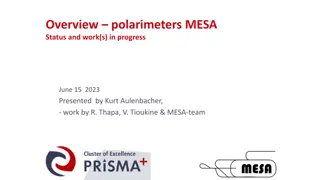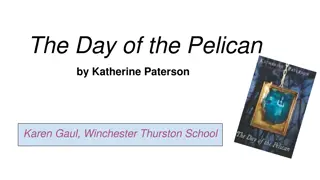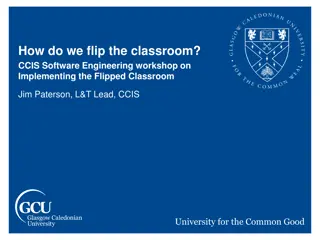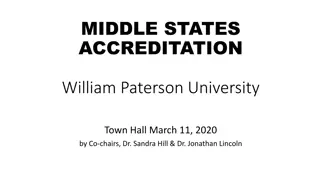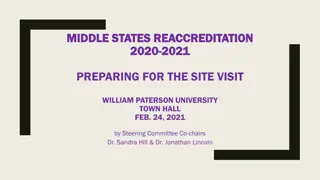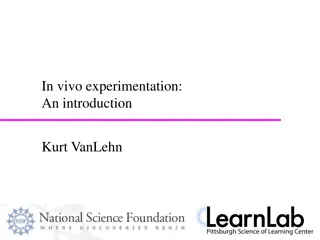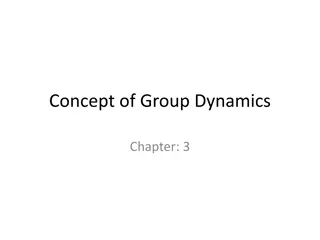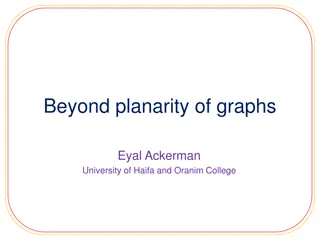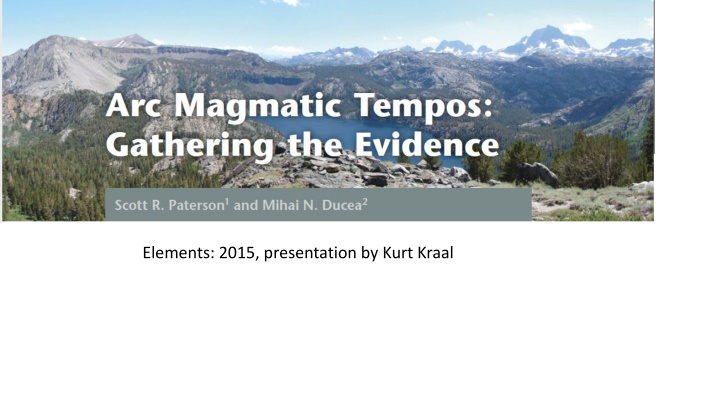
Episodic Magmatism and Magma Addition Rates in Geology
Explore the fascinating world of episodic magmatism and magma addition rates in geology, with insights into global fluctuations, arc tempos, Sierra Nevada patterns, and isotope chemistry correlations. Discover how zircon data and detrital zircon aid in understanding the timing and durations of magmatic events.
Download Presentation

Please find below an Image/Link to download the presentation.
The content on the website is provided AS IS for your information and personal use only. It may not be sold, licensed, or shared on other websites without obtaining consent from the author. If you encounter any issues during the download, it is possible that the publisher has removed the file from their server.
You are allowed to download the files provided on this website for personal or commercial use, subject to the condition that they are used lawfully. All files are the property of their respective owners.
The content on the website is provided AS IS for your information and personal use only. It may not be sold, licensed, or shared on other websites without obtaining consent from the author.
E N D
Presentation Transcript
Episodic Magmatism Based on Zircon data, Episodic magmatism seems to be the case world wide Episodic characteristics have been observed at scales ranging from entire arcs to single volcanos Arcs can have flare-ups over ~30 MY windows, and then have lulls with little magma addition Global fluctuations in Arc Magmatism has been observed worldwide as well Observed best in continental arcs, partly because oceanic arcs are poorly preserved, and also generally more mafic (and therefore less zircon)
Magma Addition Rates Magma Addition Rates (MAR) vary through time, in a wave-like pattern of magmatism (Figure C) There is a wavelength (spacing) of flareups, and variations in amplitude (i.e. volume of magmatism). These combined are called arc tempos Changes in magmatism can be related to external forcing on arc systems (e.g. change in mantle flow, plate reconfigurations, collisions) or internal cyclic processes driven by a feedback between tectonic and magmatic processes Detrital Zircon can provide information about timing and duration but not necessarily the volumes of high/low MARs. To determine Mars, temporal data is linked to geologic maps showing area of igneous rocks, retrodeformation of igneous units, estimates of vertical thickness and volumes of volcanic and plutonic units, calculation of the volume of magma added per time increment
Sierra Nevada This plot shows waxing and waning patterns Flare-ups represent 100-1000 times greater magma added than during lulls Plutonic footprints are often greater than volcanic caps: 30:1 ratio of plutonic to volcanic rocks, perhaps greater MAR calculations systematically underestimate volumes of older magmatic materials (because older materials are magmatically eroded or recycled)
Isotope and Trace Element Chemistry and MAR episodes Changes in isotope and trace element chemistry in arcs often correlate with high MAR episodes Example: most high MAR events are accompanied by high Sr/Y and La/Yb ratios High values are measured in magmas of high SiO2, of 60%, suggesting that these events took place while the crust was thicker than normal Other isotope values suggest greater input of upper plate s lithosphere
Possible Mechanisms for episodic arcs: Mantle-lithosphere interactions Jurassic Flare-up related to the break up of Gondwana and its associated change in plate motions. Late Cretaceous Cordilleran flare-up possibly related to an increase in oceanic crust production rates and/or plate reorganizations Feedback between linked tectonic processes (foreland shortening, underthrusting of foreland material into lower crustal parts of arcs, crustal thickening and mountain building), sedimentary erosion, and magmatic processes. decompression melting within the mantle wedge and modulated by the thickness of the upper plate episodic volatile fluxing into the mantle wedge, episodic melting scenarios, and the modulating effects of thick continental crust on rising magmas Thermal lags likely to occur between tectonic change and magmatism effects


